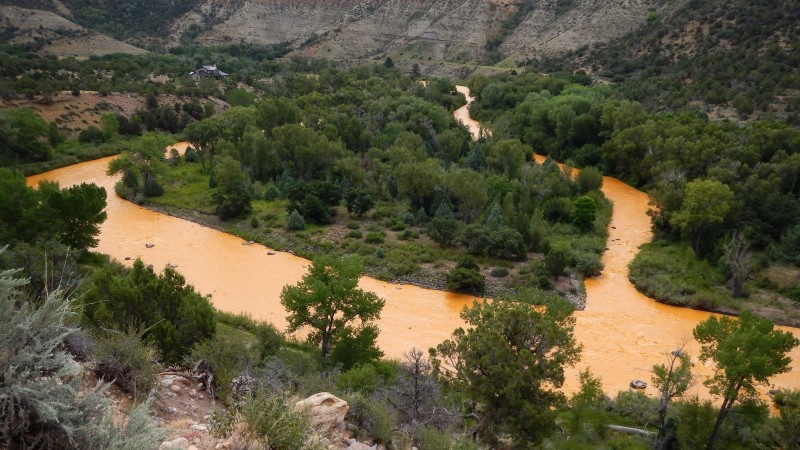The environmental crew had one job: pump out and treat contaminated water at the Gold King Mine in southern Colorado.
Instead, when the workers for the Environmental Protection Agency used heavy equipment to enter the defunct mine on August 5, 2015, a leak sprung. A massive one.
The EPA has taken full responsibility and announced it was temporarily ceasing work at other mines to avoid a repeat.
Water tainted with heavy metal gushed from Gold King into the nearby Animas River, turning it a solid mustard color. It flowed downstream for dozens of miles crossing state lines. It made life miserable for thousands who depend on the river water.
Here is the toll the spill has taken told by the numbers.
3 million
The number of gallons of heavy metal filled wastewater the U.S. Geological Survey says spilled into the Animas River. That’s about 60,000 bathtubs full.
The bright discoloration was an obvious flag that something was awry in the river. But the EPA was sluggish with information in the aftermath, as residents worried about possible damage to their health, and businesses on the river shut down.
12,000
That’s how many times higher than normal the level of lead was in one water sample tested from the Animas River shortly after the spill.
Lead poisoning is tricky, because at low levels, it can be hard to detect. It can slow down child development and cause learning disabilities, the Mayo Clinic says.
Lead is just one of the many heavy metals released, and it’s not the deadliest. The wastewater also contained extremely high levels of arsenic, cadmium, beryllium and mercury. It also contained zinc, iron and copper.
3
The number of states heavily hit by the spill: Colorado, New Mexico and Utah.
The attorneys general of the states hinted they might sue the federal government individually or collectively. But Colorado Attorney General Cynthia Coffman said, “It is too early to know if litigation is necessary or appropriate.”
The EPA has mentioned the idea of an independent review of the incident in addition to its own. The attorneys general support this.
2
The number of rivers affected. The heavy metal plume also flowed from the Animas into the San Juan River in New Mexico. It carried the pollution into Utah.
The rivers serve as the source for five water supply systems, the EPA told CNN affiliate KOAT.
It’s hard to say how many people the spill affected.
The banks of the rivers are sparsely populated, but they are surrounded by farmland in an otherwise dry to desert terrain, and farmers are dependent upon river water to irrigate their crops.
45,000
That’s the population of the largest town affected by the spill: Farmington, New Mexico. It’s located on the spot where the Animas flows into the San Juan. The next largest municipality is Durango, Colorado, with a population of more than 17,000, according to the U.S. Census Bureau.
The Navajo community around the town of Shiprock, which is downstream from Farmington on the San Juan River, is hard hit as well. Some 750 farmers there need river water to irrigate.
The community has vowed legal action against the EPA.
90
That’s how many days’ water reserves Farmington has before it will need to draw river water. Farmington’s reserves also supply nearby towns with drinking water, including Shiprock.
Some residents are concerned the heavy metal spill might seep into groundwater, poisoning wells. More than 400 Farmington residents who draw their water from wells have turned in samples for testing.
A week after the spill, tests indicate that the Animas River is returning to normal, but fears linger over possible long-term consequences. Experts say adverse health effects from heavy metal poisoning can take years to become apparent.
500,000
The rough number of old mines similar to the Gold King Mine that environmental activist organization Earthworks says that need to be cleaned up. Earthworks says some of them could be leaking waste into groundwater nearby.
